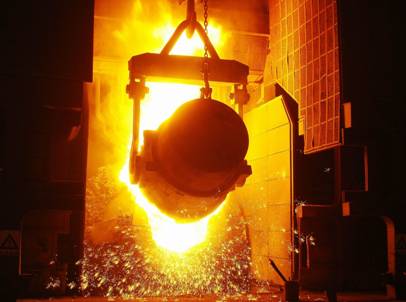Product
Fused Cast AZS Block
AZS Casting Type
AZS Ramming Materials
Fused Cast AZS TY-AZS41
Fused Cast AZS TY-AZS36
Fused Cast AZS TY-AZS33
Fused Cast Alumina Block
Fused cast Alumina Block TY-H
Fused cast Alumina Block TY-A
Fused cast Alumina Block TY-M
Fused Cast High Zirconia Block
Fused Cast Skid Rail Block
Silica brick
Magnesia Series Brick
Bonded Refractory Block
High alumina And Fire clay bricks
Insulation Series Brick
Ceramic Fiber Products
Contact Details
- 0086 371 63838939
- 0086 371 63835539
- sales@sunriserefr.com
- tkfanyi
- No.36 Fengchan Road, Zhengzhou City
Solutions
Refractory Materials Used In the Top and Bottom Blown Converter
- More related products
- Fused Cast AZS Block
- Fused Cast Alumina Block
- Fused Cast High Zirconia Block
- Fused Cast Skid Rail Block
A top and bottom blown converter is a smelting furnace for steel making by blowing oxygen into a converter from its top and bottom. The refractory materials used in the bottom air blower outlet are very important for the service life of the top and bottom blown converter.

In actual production, thermal factors and refractory factors have great impact on the corrosion of the bottom air blower outlet. Thermal factors mainly refer to the hot crack of the bottom air blower outlet. The cooling of the bottom blown air, the temperature gradient of the high temperature molten iron and repeated blowing-non-blowing operation result in sharp temperature changes, which cause the stress change in the refractory brick. In order to avoid the crack of the bottom air blower outlet, the selection of the refractory is very important.
MgO-C brick is made by adding flake graphite to magnesia aggregate. It can make up for the shortcomings of magnesia and avoid the crack of the bottom air blower outlet due to slag penetration. MgO-C brick improves the service life of the bottom air blower outlet.
With the improvement of the quality of the raw materials, the introduction of the metals and large vacuum extrusion equipment, the quality of MgO-C bricks are improved. In the mid-1980s, MgO-C brick replaced the magnesium dolomite brick to be used in the lining of the convertor. Especially since the 1990s, the crack resistance of MgO-C bricks was further improved due to the use of expanded graphite as a carbon source and the reducing of the elastic modulus.
In addition, ceramic insulation materials are used in the pure oxygen bottom blower outlet. It improves the service life of the bottom air blower outlet.
Read more
Need more information? Drop us a line
For more information on any of our products please get in touch using the form below. One of our sales team will respond to your enquiry as soon as possible.
Copyright © 2014 Zhengzhou Sunrise Refractory Co., Ltd. Site Index Product IndexSitemap









